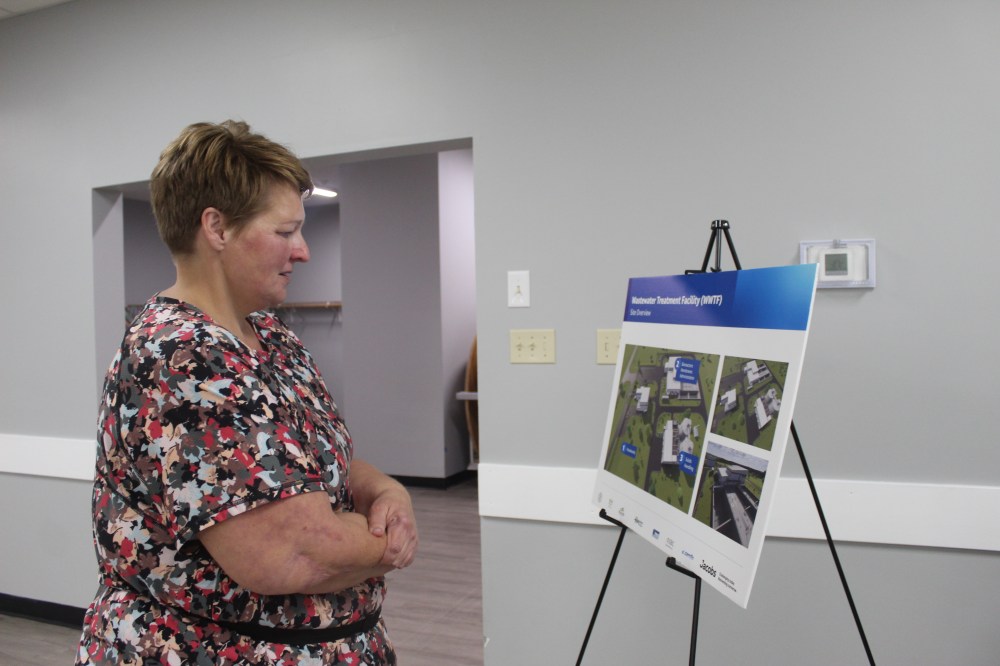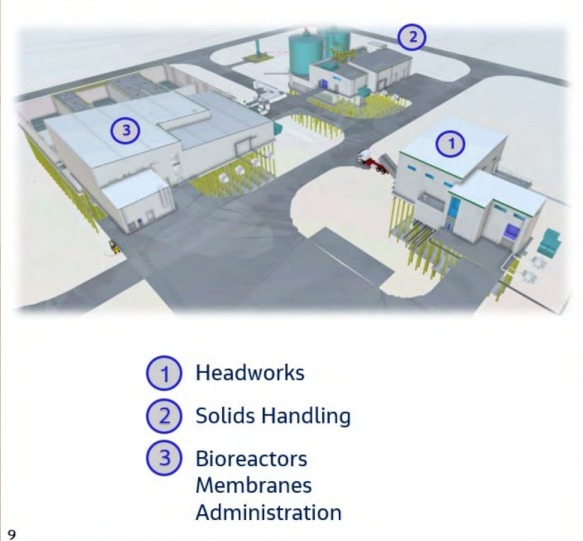$234M wastewater plant to help six municipalities grow, cut emissions
Advertisement
A new wastewater plant in southeastern Manitoba will begin construction by spring 2026, following tenders closing last week. Once completed, the plant will allow 13 communities to double their population and potentially attract more industries to the region.
On Tuesday, members from the Red-Seine-Rat Wastewater Cooperative and engineering firm Jacobs held an open house in Mitchell to share details about the plan and answer residents’ questions. The cooperative includes six municipalities: Niverville, Hanover, Tache, De Salaberry, La Broquerie and Richot.
The $234 million wastewater treatment facility would allow the member communities to grow to 70,000 people when operational. The plant will be built outside of Niverville near its existing lagoon. Because of the plant’s modular design, more users and communities could be added.

Tenders closed on Friday, with decisions on the best tender already underway. The board has up to 60 days to accept the tender.
Both federal and provincial governments contributed funding, with the province giving $18.06 million and federal government giving $21.68 million. La Broquerie also paid $15 million for the project.
The remaining $179 million is covered through financing and municipal contributions. The Canadian Infrastructure Bank, a federal Crown corporation, and Access Credit are each lending half of that amount. The mortgage will have a 30 year term. To cover extra costs and pay off the mortgage, the cooperative will increase its tipping and sewage rates for communities.
The plant is expected to be fully operational by 2028. Along with building the wastewater plant, 100 kilometres of piping will be built and each municipality will convert one cell of its existing lagoons to collect any potential overflow.
Construction on a new plant is crucial so capacity can expand, said Gordon Daman, the cooperative’s community consultant. Without the project, growth would freeze and no new homes or businesses could be built due to many municipal lagoons approaching capacity, he added.
“Frankly, at the end of the day, the project has to proceed. There’s no choice,” Daman said during the meeting. He said the building the new plant will avoid municipalities spending $355 million on adding and replacing lagoons.
For local companies, like Bothwell Cheese, the new plant will enable expansion and attract more industries to the area, he said. The businesses would pay an “industrial rate,” which Daman said could help offset some of the costs for ratepayers.
“If we want to ensure that we continue to be able to enjoy those squeak’rs or fresh Bothwell Cheese, this is something that’s very, very important to council here in Hanover to make sure we don’t lose a company like Bothwell that may look elsewhere if they can’t get that level of treatment,” he said.
Daman said once the plant is running, it could reduce green house emissions by 93 percent because the municipalities will shift away from the methane-producing lagoons.
Due the new plant’s cost, sewer rates will rise over from 2026 to 2028 across the all participating municipalities to cover the financing and extra costs, like engineering fees and setting up a reserve fund. The rates will vary depending on population and capital costs.
The cooperative applied to licence the plant as a public utility so the provincial Public Utilities Board would handle approving rates.

“It’s important because in 30 years that mortgage is going to be paid for and there’s going to be less payments. In 30 years, you don’t want the rates to stay the same. You want those rates to drop because there’s not the same level of expense. So by having the PUB involved, it provides that protection,” Daman said.
Mitchell resident Carlin Thiessen views the project as necessary for the region, despite the large cost.
“It costs money to plan for the future and build something you can actually take into the next 30 years,” he said. “You have to invest in those things.”
He questions Steinbach not being involved in the plan and is concerned its separate sewage project will add “unnecessary” challenges and competition when attracting industries and businesses to the area.
In May, The Carillon previously reported that Steinbach’s council decided against joining the cooperative after its analysis found it would be more expensive than building a separate plant and expanding its lagoons. That project would cost up to $132.5 million.
Thiessen hopes the the cooperative’s new plant will help communities, like Mitchell, get more federal and provincial funding because of the reduced environmental impact.
“I love the fact that we’re stewarding the planet better,” Thiessen said. “With costs going up, it’s a tough pill to swallow. But it’s the better decision than the alternatives.”
